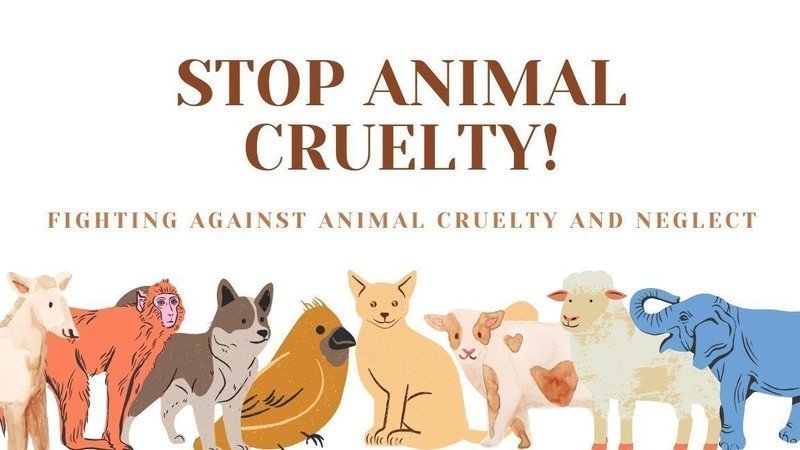Animal cruelty has long been a dark shadow cast over society, spanning cultures and centuries, as insidious as a creeping vine that chokes the vitality from the most vibrant of gardens. Yet, as we navigate through the intricate tapestry of progress and setbacks in combating this malevolent force, a complex picture arises—a kaleidoscope of victories and failures that shape our current landscape. Understanding whether animal cruelty is being aptly addressed requires a nuanced examination of the laws, advocacy efforts, public awareness, and systemic challenges that punctuate this ongoing battle.
To begin with, legislative frameworks play a critical role in safeguarding our fellow beings. In recent years, there has been a palpable shift towards more stringent laws aimed at protecting animals from malicious mistreatment. The passage of felony animal cruelty laws in numerous states represents a notable leap towards justice. These laws echo like a clarion call, signaling a societal intolerance for cruelty. Depriving an animal of its basic rights—food, shelter, and companionship—has gained the status of a serious offense. Yet, amidst these advancements, loopholes remain as glaring as daylight in a darkened room. Laws vary significantly from one jurisdiction to another, often diluted by socio-political influences and lobby groups that oppose stricter regulations.
However, it is crucial to acknowledge that laws alone cannot cultivate a climate of empathy and respect for animals. While statutes serve as a framework for justice, they are ineffective without the stroking hands of compassionate individuals devoted to advocacy. Animal rights organizations have proliferated globally, standing as fortresses against the tidal wave of cruelty. Their campaigns educate the public, promote better treatment, and manage rescue operations that shine hope into the crevices of despair. Yet, the effectiveness of these movements often hinges on public engagement. When society perceives animal welfare as a mere afterthought, much like an uninvited guest at a lavish banquet, the momentum for lasting change falters.
Public awareness is a proverbial double-edged sword. On one hand, educational initiatives illuminate the path toward a more humane society. Documentaries, social media campaigns, and activist networks serve as powerful vehicles for disseminating information. They enable individuals to see the hidden horrors endured by animals, addressing disillusionment and apathy, which have long served as anesthetics to the realities that many choose to overlook. Conversely, the sensationalism that can accompany these campaigns risks alienating potential supporters, as stark images of suffering can be too overwhelming for the uninitiated. The challenge lies in striking a balance between advocacy and accessibility, avoiding depictions that render people immobile rather than inspiring them to take action.
Despite the strides made, the journey towards eradicating animal cruelty is fraught with setbacks that can feel cyclical. In some respects, society appears to oscillate between progress and regress, much like the undulating waves of the sea that crash upon the shore only to retreat again. The fur industry, for instance, has witnessed a resurgence in demand despite growing ethical concerns. In certain regions, factory farming practices continue to plague the agricultural landscape, overshadowing advances made in animal welfare standards. These setbacks aren’t mere ripples—they represent societal apathy in the face of moral dilemmas. Questions arise about the very fabric of consumer choices, as individuals grapple with the implications of their purchasing power.
The cultural tapestry we inhabit further complicates the battle against animal cruelty. Traditions and practices that involve the use of animals can perpetuate cycles of violence and exploitation. These entrenched beliefs are often resistant to change and present obstacles for activists striving to realign societal values. Yet it is within this cultural context that we must weave new narratives, embracing the intersection of tradition and compassion to foster a more harmonious coexistence with animals. Dialogues within communities that honor cultural practices while promoting humane treatment can breed understanding rather than animosity, paving the way for progressive change.
Moreover, the emergence of technological advances presents both opportunities and challenges in the realm of animal welfare. Innovations such as surveillance technology and genetic engineering have brought attention to animal rights in unprecedented ways. Camera traps and mobile apps allow citizens to document abuse, putting digital pressure on perpetrators. However, one must cautiously navigate the ethics of tech interventions. Can we truly rely on a digital crusade to replace the need for heartfelt activism? Complexity increases as we parse through the gray areas of technological integration into advocacy.
In conclusion, whether animal cruelty is truly being stopped is a question that engenders reflection on multiple fronts. There are glimmers of hope as progress is made through legislation, advocacy, and increased awareness. Yet, the lingering shadows caused by cultural resistance, setbacks, and the ethical concerns posed by technology urge a reevaluation of our strategies and engagement methods. Moving forward, a collective approach—uniting compassionate individuals, robust legal frameworks, and culturally sensitive dialogue—might create a robust bulwark against animal cruelty. It’s about nurturing a garden where empathy flourishes, unfurling toward a future where the notion of cruelty becomes an archaic relic of the past, replaced by a collective consciousness committed to the welfare of all sentient beings.







